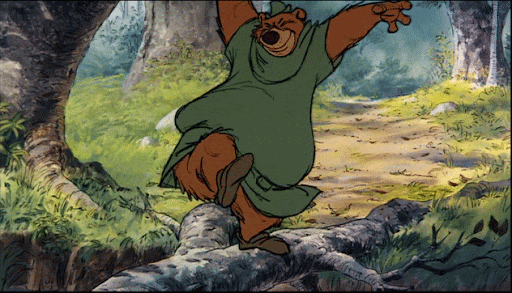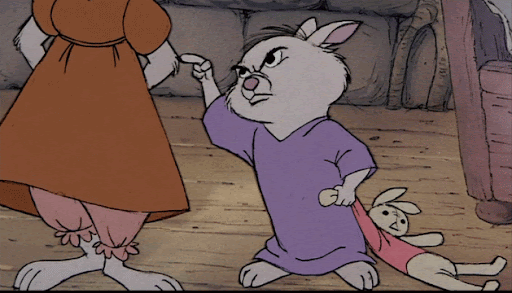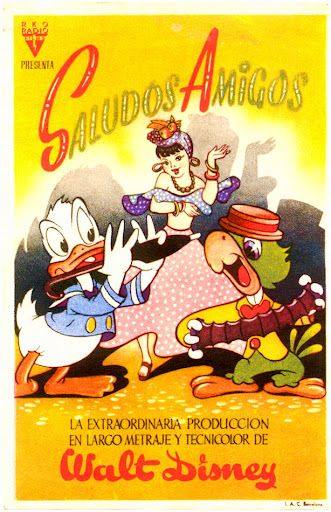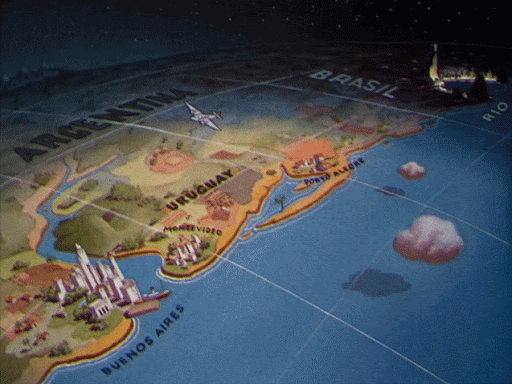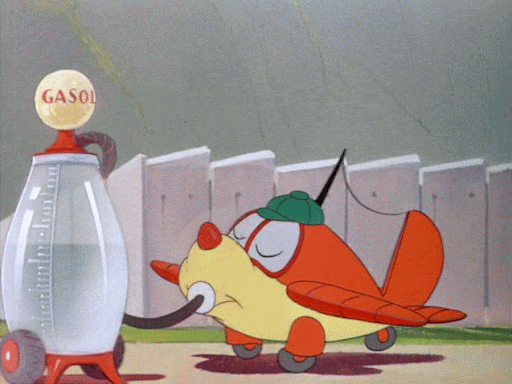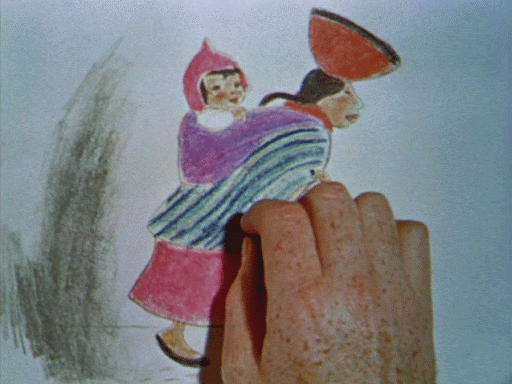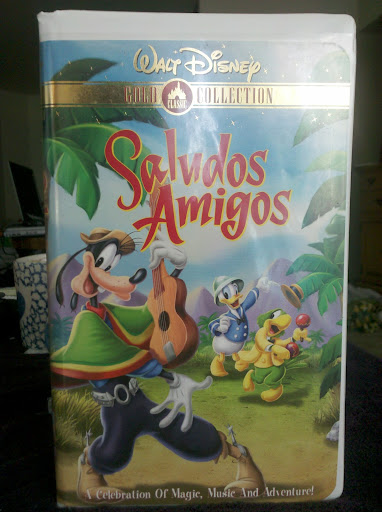As we near the end of the year, you can bet your bukkit that the blogosphere, mainstream press, and entire internet in general will be cranking out Best Of The Year lists left and right. And because I’m so trendy and hip, I’ll throw my hat into the Best Of space as well. One minor setback, though: I haven’t seen enough great movies, heard enough great albums, or played enough great games to truly make a comprehensive list.
No matter. Because this is a blog (not only that, it’s my blog), the experiences are pertinent to me, so I can make a list of whatever I want, with whatever I want. Not only that, to make only one (1) list for a blog as diverse as Diversion 2.0 would be wasting its full potential, like Gary Coleman sleeping in Yao Ming’s bed. As such, I’m not going to make a list of the best films, albums, and games of 2010—goodness knows I haven’t seen enough of them. Instead, I’ll be more general: here (in no particular order) is my list of Ten Things I Liked in 2010.
Tangled

Okay, I lied—THIS is probably my biggest Like (Facebook thumb and all) of 2010. Something about this movie resonated strongly with me, and I’ll do my best to recapture it within one or two paragraphs (I can’t go blowing my load before Our Feature Presentation catches up with this beauty). You’ve probably heard the premise already: Tangled is a Disney-fication of the Rapunzel story, complete with new songs by Alan Menkin and Glenn Slater, and a contemporary (though not snarky) sensibility. Perhaps you haven’t seen Tangled, but seen the ads instead. Eff ‘em. They’re for a different movie than the one I saw (three times and counting).
Tangled has several things going for it. First-off, it manages to be a CG movie without looking like something from Dreamworks and Pixar’s cutting room floor; the film is absolutely gorgeous in its character design, soft and warm in its backgrounds, and makes for a surprisingly-close fit with the rest of the canon (compared to, say, Bolt or Chicken Little). I also loved the movie’s sincerity—it’s becoming all-too easy to throw a fairy tale onscreen, then point and laugh at its idealism and old-fashioned-ness, and Tangled is not afraid to take its characters and situations seriously (not too seriously, but the movie never nudges the audience or expects them to be “in” on the joke). Lastly, it’s Zachary Levi, and who doesn’t love Zachary Levi?
Duck Lips Nation – Ke$ha - Canni/mal and Lady GaGa - The Fame Monster
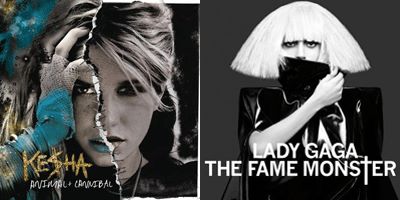
Technically, The Fame Monster didn’t come out in 2010; it was released at the tail-end of November of last year. That said, it didn’t super explode in Helena until the following winter, and I never got any personal exposure to it until Jordyn got it for her birthday. Not only that, it makes a great companion piece to that other blond pop diva with a penchant for duck lips music, Ke$ha.
Both albums combine to make a one-two punch of synth-driven, dance hall music, though they go about them in totally different ways. GaGa is nothing but classy (well, weird too, but classy weird), while Ke$ha is nothing but trashy. What they have in common, though, is some stellar more-than-the-sum-of-its-parts production work (listen to the synth line on “Alejandro” and “Tik Tok” and how it interacts with the melody; you’ll see what I mean). Also, they’re both mini-LP’s that were brought out to satisfy demand for more music, and they’re both mostly killer, some filler. It’s certainly not the headiest music this year, but I can’t think of anything else I’d rather listen to in a dance floor setting.
Halo: Reach
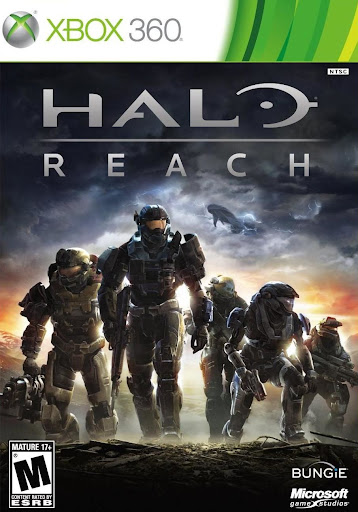
Boy, this one snuck up on me. I’ve never been the biggest Halo fan, even though I’ve enjoyed the story (which is like saying that I’m not a huge fan of Hooters, despite their exceptionally tasty wings), so I didn’t expect to even purchase this game, let alone enjoy the crap out of it. I think the biggest thing this game has is a back-to-basics design philosophy. Bungie ditched about everything that was excessive about 2, 3, and ODST (that is to say, almost all of the gameplay advancements made in 2, 3, and ODST), and basically made a super tight, polished version of Halo: Combat Evolved.
Not only did Bungie play getback with Halo’s gameplay, they made a few positive improvements to the formula. The biggest addition is the inclusion of armor abilities, perk-like power-ups that are a fun addition in single player and a strategic necessity in multiplayer. Players can sprint out of danger, rain death from above in a jetpack, or lock their armor so that grenades (or tank rounds) bounce harmlessly off. The variety pushes the already-satisfying nature of the multiplayer to even greater heights, and the robust matchmaking had me coming back for a few weeks solid. Co-Op in the campaign was incredible, and the overall package is a good one. Bungie may not be making Halo games anymore, but they picked a hell of a game to usher themselves out with.
Hot Tub Time Machine
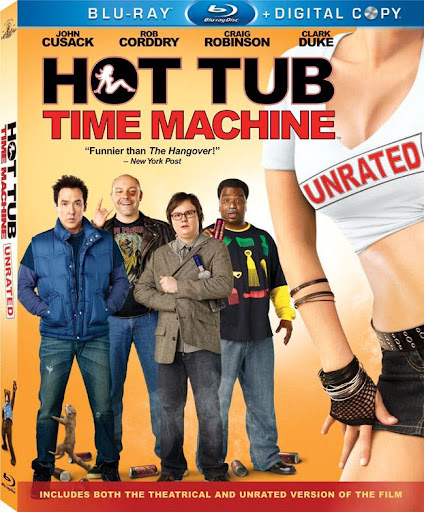
As you may recall, I enjoyed Hot Tub Time Machine when I first saw it back in March. I did not expect to enjoy it, and that is part of what made the movie great for me—pleasant surprises are not something that I can readily expect from the movie industry these days, though, like Tangled, the film’s marketing is markedly different from the finished product. It’s off-kilter self-awareness makes the movie much more fun and intelligent-seeming that it appears at first blush, and I still chuckle at some of the digression humor that takes place (“In what part of the asshole book does it say you can just screw your friends and do whatever you want?!” “Actually, I’m pretty sure that’d be in the asshole handbook.” “Yeah, like guidelines for being an asshole.” “Alright, point taken, my bad.”).
The movie has its share of problems (the beginning ten minutes is pretty rough, there are a set of (probably intentional) plot holes, and I am not a fan of Janice from Mean Girls’s faux-Zooey Deschanel character), but it’s a great movie for folks who like “college humor” (tits and beer and vomit) AND for folks who can muscle their way past that junk for the sake of a fun, nostalgic, off-beat comedy. I didn’t expect this to make my list, but after watching it three or four times on Blu-ray, I figured it merited inclusion.
Rock Band 3
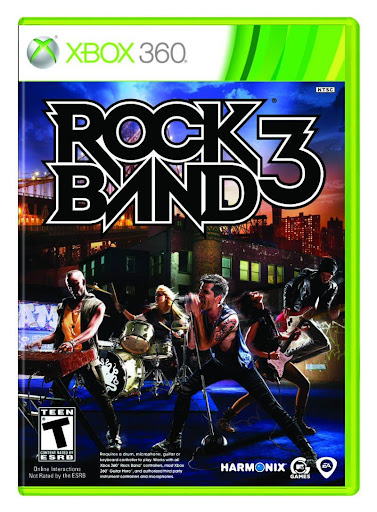
As a Rock Band junkie for the past two years, this game's inclusion on my list was as certain as the sun rising in the East. Still, I'm pretty damn impressed with how the finished product turn out. Every niggling complaint I had with Rock Band 2 has been fixed, including some I didn't even know I had. The keyboard adds another option for my friends who like Rock Band but are intimidated by guitars and drums, and is a great alternative to my usual drummin' play style. The campaign has received an overhaul, replacing the usual song-tier structure with randomized sets of three-song challenges, making it even easier to accidentally let the time go and play for five hours straight (this actually happened).
The on-disc track selection is fantastic, with more variety than ever before (and less ham-fisted than other music games touting setlist "variety"), and the DLC library just keeps on growing. Now that Harmonix has been sold and the music genre sales have been declining, I'm a bit worried for the future of the music game. Still, if Harmonix can continue cranking out songs for me to buy from Xbox Live, I'll keep on playing Rock Band 3 until the disc wears out (or, more likely, my drumset gets too crappy to play on. Again).
Inception

I was unable to see this movie in theaters when it was first released—a real shame, as I can only image the kind of mind-screws that would have resulted from seeing this on a huge effing screen. I was able to catch it on Amazon Video On Demand, though, and was still very pleased with what I saw. Most satisfying about Inception is the idea of the movie: what if this is a dream, or a dream within a dream, or if we’re all in some guy’s Animus somewhere? The movie takes this idea and runs with it, throwing up convoluted dream-within-a-dream scenarios and inventing new ways to twist ideas that were delivered to the audience ten minutes prior. It’s a movie that’s a bit tough to swallow the first time around, but is well-worth watching twice (or more!).
More than just a good idea, Inception has a great execution as well. Casting is stellar; Leonardo DiCaprio continues to own every role that is given to him, Joseph Gordon Levitt gives an amusing, dorkily-charming turn as Leo’s cohort, Ken Watanabe plays a sublimely Ken Watanabe part, and Ellen Paige demonstrates a flair for action that certainly wasn’t on display in Juno. The film looks great, with brain-bending special effects that are as inventive as they are awesome (JGL’s gravity-defying fistfight in a hotel hallway springs immediately to mind). Inception sounds great too, with Hans Zimmer on the track for a Golden Globe-nominated score, though if you’ve seen The Dark Knight or played Modern Warfare 2, you’ve already heard a good deal of what this movie sounds like (dramatic cellos and foghorn-blasting brass). My internet connection wasn’t good enough to truly pimp the full experience of Inception, but I intend to rectify this with a Blu-ray rental in the very near future.
Daft Punk – Tron: Legacy soundtrack
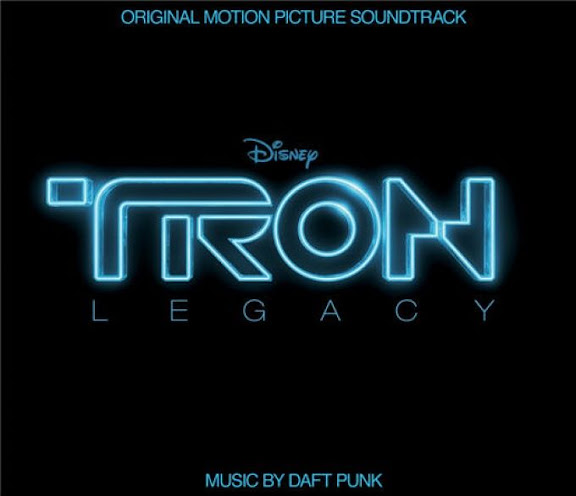 a
a
Tron: Legacy created something of a stir on teh interwebs when it was show off earlier this (last?) year. Not only was Disney creating a sequel to a much-loved nostalgic classic from the 80’s, but they also had commissioned Daft Punk to create the soundtrack, an obvious choice, considering the electronic nature of both the movie and the group. While the movie hasn’t been a critical darling by any means (I think Rotten Tomatoes has it sitting at something like a 47%), it received almost universal praise for its score, and being curious about it, I picked it up one day on the Amazon MP3 store for about four bucks.
It certainly wasn’t what I was expecting; rather than a dance-y, spacey record full of blips and bloops, Daft Punk took the best parts of The Dark Knight and Mass Effect’s soundtrack and sprinkled them with Thrice’s The Alchemy Index: Volume II (I will be very surprised if this was actually the thought process, rather than a short list of awesome things it reminded me of). The album is totally evocative of Tron and everything about it: the colors, the vibe, the sense of place are all completely and totally linked to the score, making it easy to get lost in the sound and imagine being… elsewhere.
You may be thinking, “Why does he care so much about a movie soundtrack?” I’m what you might call and avid film score-listener. You see, I work in an office, and music with lyrics can be very distracting, which is why my music-listening habits have consisted mostly of movie and video game soundtracks (Chrono Trigger and The Empire Strikes Back are always good calls in my book). Tron: Legacy’s soundtrack has many wonderful melodies, and there’s something about the cohesiveness of the album that makes it easy for me to focus on whatever I’m doing. That may not be a reason for you to go out and buy this one, but hopefully it’s enough to get you out to the movie theater and see and the music and the images from the movie interact with each other.
Modern Military FPS Multiplayer
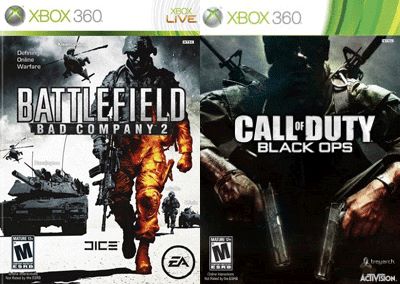
Last year, when Modern Warfare 2 launched, I briefly considered getting the game—not only was the single player an awesome, satisfying experience (unlike certain recent entries to the series), the multiplayer was a super polished and very enjoyable experience. I didn’t get it, though, because I knew that I was getting Battlefield: Bad Company 2 when it came out during the following March, and I knew that I wouldn’t need two military FPS games. How very wrong I was.
My mistake was to suppose the two modes were identical because they both involved shooting at people with an M16. In reality, both games take a different (and equally satisfying) approach to multiplayer. Modern Warfare 2’s multiplayer (and, as an extension, Black Ops’ multiplayer, because they’re exactly the same) is rather twitch-based; you’re there to cap some dudes in ten minutes or less, and games are always fast, frantic, and quite pleasing. Bad Company 2’s multiplayer is a slower, more objective-based game for players more interested in working towards a team goal. What impresses me about the both of them is how well they complement each other—whenever I got bored of one, I would switch to the other, and vice versa. 2010 is the year I saw that modern shooters could co-exist, and my life can only be richer for it.
The Roots – How I Got Over
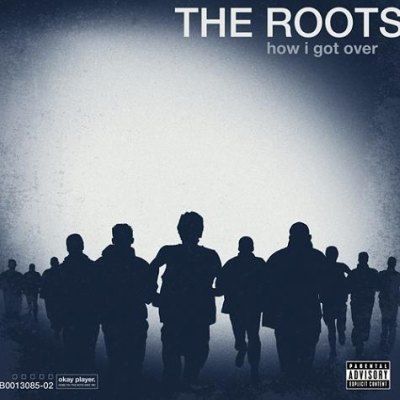
I’ve been a huge fan of The Roots since I first got The Tipping Point for my birthday back in 2004 (wow). That said, I’m much more of a fan of their early, jazzy-sounding stuff than their recent material. Albums like Phrenology, Game Theory, and Rising Down blaze trails for what a hip-hop group can sound like, but experimental, edgy music isn’t my largest bag. For this reason, How I Got Over is probably my favorite album from The Roots since Things Fall Apart; the album is a deft combination of old sounds with a new maturity. How I Got Over is loose without seeming scattershot, and the whole thing just feels better than their last few albums.
Not only is How I Got Over a personally vindicating album ("The sequel to one of my favorite albums ever! Hot damn!"), it's also just plain good. The jazzy, live sound of The Roots has never been more soulful, and while there are no club bangers to be found (see The Tipping Point for that), the whole package feels cohesive and wonderful. Black Thought's rhymes remain thoughtful without overstepping into bleakness, and ?uestlove and the rest of the guys create an atmosphere that starts mellow and grows progressively more hopeful; this is the only album I can think of that has a listening arc, and experiencing the changing mood and attitude is rewarding indeed. Plus, the album ends on a supremely fun note: "Web 20/20" is probably my favorite "battle rhyme" song of The Roots since "Web" in 2004, "Hustler" humorously uses an Auto-tuned baby cry as a beat sample (it's appropriate, though—the song's about being a not-irresponsible parent), and "The Fire" is a driving, inspiring piece of neo-soul that's bound to end up in a sports montage somewhere. Fans of hip-hop shouldn't miss this, and non-fans may want to give it a look anyway.
Of course, you can’t have your sweet without your sour (and folks just love ice-cold, snarky glasses of Haterade), so here are my top 5 disappointments of 2010.
Clash of the Titans

Clash of the Titans was my reverse Hot Tub Time Machine. I didn’t grow up watching the original film (it’s sitting in my Netflix Instant Queue as we speak), nor did I have any notions of what ought to happen in this movie. In fact, I only had one expectation: fun, and my expectations went grossly unmet. That’s right, a movie where Sam Worthington beats the snot out of Greek deities couldn’t find the time or effort to be enjoyable. Shame, really, because the pieces were there, what with a solid cast (Liam Neeson, Ralph Fiennes, the drool-worthy Gemma Arterton), some competent special effects, and a premise that all but promises a good, campy time at the movies (it’s called “Clash of the Titans,” after all). Sadly, this wasn’t too be at all.
Modern Military FPS Single Player

Speaking of unnecessary grimness ruining an experience, let’s chat about the single player campaigns for this year’s FPS juggernauts (Halo: Reach excluded). My lack of enjoyment towards the single player component for these games (in particular, Battlefield: Bad Company 2 and Call of Duty: Black Ops) was almost directly proportional to how much fun I had in multiplayer. For some, this isn’t a big deal; I have a few friends that, to my knowledge, never even touched the single player of either games. Pour moi, however, I couldn’t help but feel that I only got half a game. Remember, I bought the first Bad Company for the single player—which, I realize, is akin to buying a CD to admire the liner notes—and loved every second of it. Imagine my disappointment when I dived in, expecting to start leveling buildings for the sheer, unadultered hell of it, only to discover that the game had been reduced to a corridor shooter. All of the freedom, levity, and inventiveness that made the first game a hit with me had been stripped away. Dear readers, it was a feeling of deep, deep suck.
Black Ops had a different problem. Rather, it had the same problem, but in a different way. The tiger-tight pacing that made Modern Warfare 2 a total breathless thrill ride was relaxed, giving the player more room to breathe and increased opportunities to get a peek at the man behind the curtain. The balls-out, explosive, over-the-top antics of Modern Warfare 2 was reminiscent of The Rock; the slow pace, psychological happenings, and late-game twist of Black Ops was reminiscent of The Village. One of these things is not like the other. Granted, there were definitely some moments that worked (I’d say the first quarter of the game is the best, right before the Battle of Khe Sahn), but the whole thing was uneven, frustrating, and not especially thrilling overall.
Kick-Ass
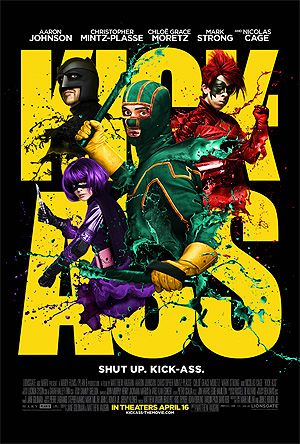
This one was more my mistake than the movie’s. I don’t think Kick-Ass’s marketing belies its level of violence, twisted sense of humor, and general different attitude—I simply wasn’t prepared for it. I’m a bit of a wuss when it comes to cinema ultra-violence; I sympathize with the characters too much, so reveling in the pain, death, and gore of regular human beings (especially when it’s obviously timed as a joke) doesn’t necessarily sit so well with me. I had the same problem with Kill Bill: it was an acute sensation that everyone in the movie theater was having a better time than me. I walked out halfway through and didn’t look back.
Katy Perry

2010 was a red letter year for drunk b@%#$ music, and I was pretty satisfied overall. There was one artist, however, who, throughout the summer, was all up in my ear (talkin’ a whole bunch of s@%# that I ain’t tryna hear). She’s been a thorn in my side every since she kissed a girl and liked iii-iiit, and she came out swinging this year, annoying Natasha Bedingfield-esque singing and wasted Snoop Dogg collaborations in check. Again, this one was probably my fault: I gave myself false hope that “Hot And Cold” marked a newer, more enjoyable direction from ol’ Kitchen Patrol. No dice.
Amber Pacific – Virtues
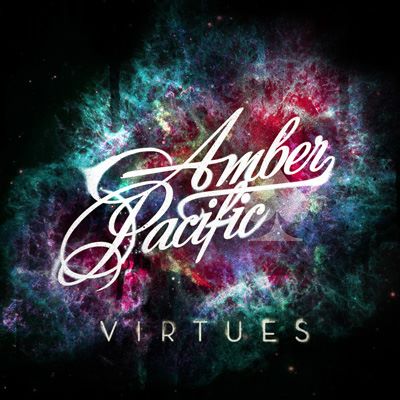
Amber Pacific has been a group that I have wanted to like for many years. They have respectable talent, high energy, and a debut EP that showcased great potential. Their first full-length, The Possibility and the Promise, was a decent effort, but still felt like it could have been just that much better. Unfortunately for me, they’ve dropped further and further off of my radar with each passing year, presumably because I’m becoming further and further away from being sixteen years old. I was disappointed with their second record, and swore never to be fooled again.
Earlier this year, I stumbled across an ad for Amber Pacific’s new album, Virtues. Still suspicious, I visited the band’s Myspace page and sampled the lead single, and from that I made a few discoveries. The lead singer had been replaced with what sounded like the guy from Billy Talent, but the energy was still kickin’. I was feeling young and reckless, so I decided to impulse-buy the album, just to be pleasantly surprised when the album turned out to be pretty good. That was a terrible decision.
Amber Pacific hasn’t been the best group in the world for me, but at least their past records were distinct-sounding, which can be tough to do in the ever-growing power-pop community. Virtues, though, sounds like EVERY NO NAME BAND THAT HAS EVER FRIENDED YOU ON MYSPACE. The lyrics are wack, the songs are all in the same key, and the whole affair just sounds tired. Perhaps someday I’ll get to know and appreciate this album, but until then, I’ll just grimace at it whenever I pass it in my CD wallet.
There you have it, my highs and lows of the year. Have you had any movies, albums, or games that made/broke your year? Sound off in the comments! I'd love to get some suggestions for things I missed and should check out, or perhaps things I should keep on avoiding. You have the floor, dear readers. Happy 2011!



